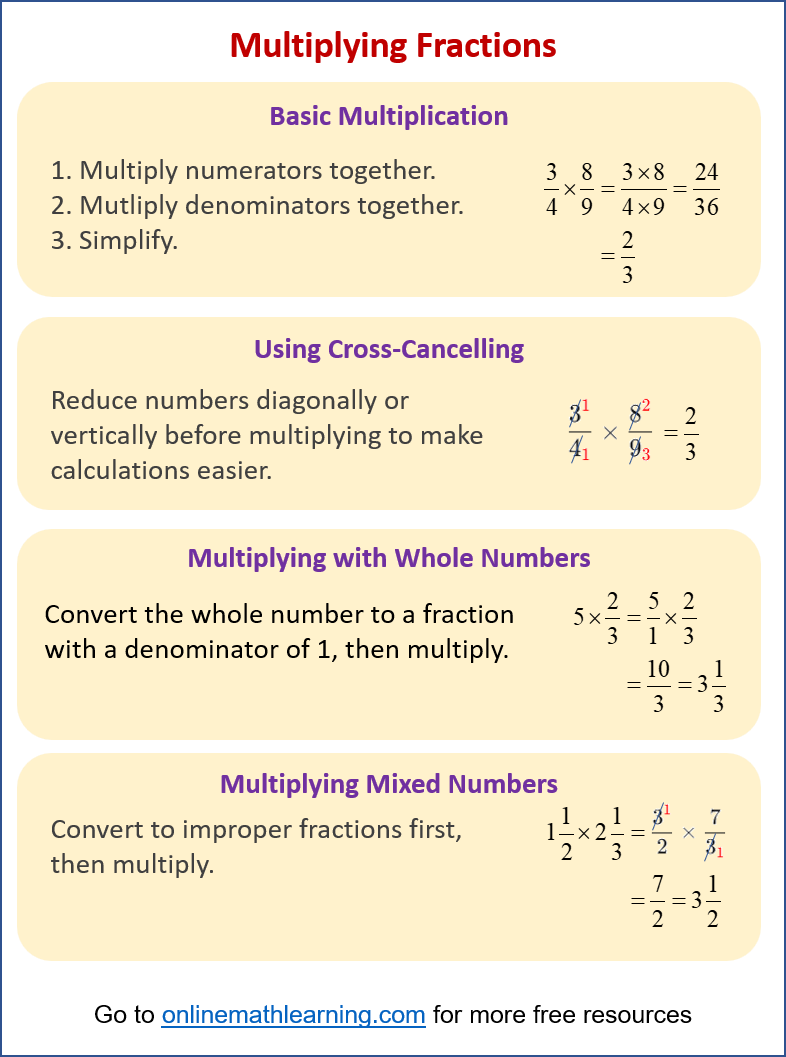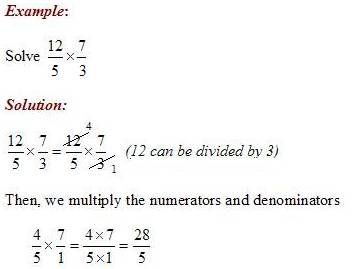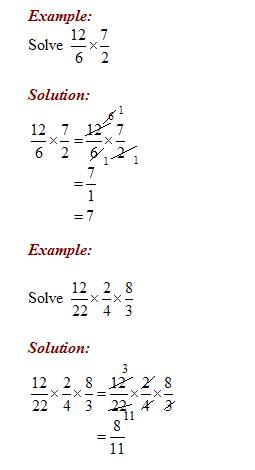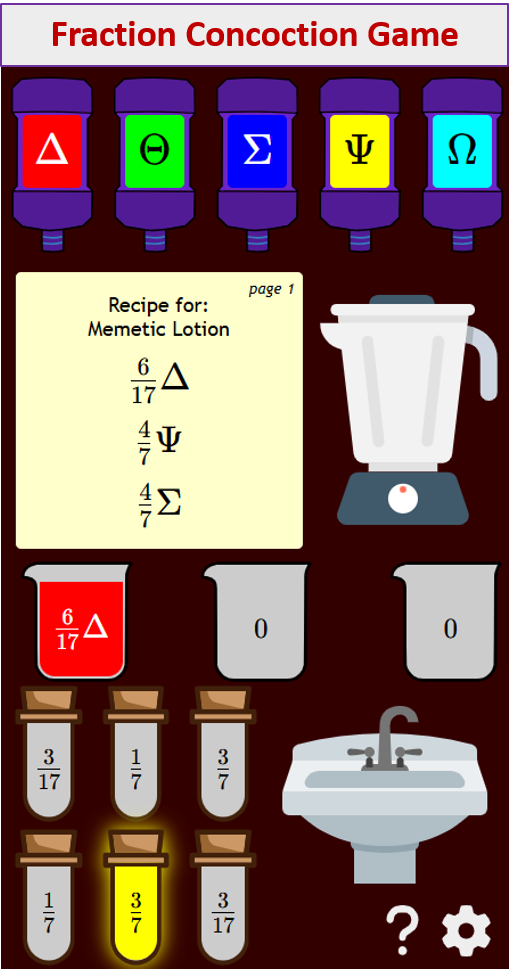Multiplying Fractions
Multiplying Fractions
Multiplying fractions is generally considered easier than adding or subtracting fractions because you do not need a common denominator.
When two fractions are multiplied, we multiply together the numerators of the fractions to form the new numerator and we multiply together the denominators to form the new denominator. We can also cross-cancel to make the numbers smaller before multiplying.
The following diagram shows how to multiply fractions: multiply fractions by fractions, cross-cancelling, multiplying with whole numbers, and multiplying mixed numbers. Scroll down the page for more examples and solutions.

Fraction Worksheets
Practice with the following worksheets.
Printable & Online Fractions Worksheets
I. Basic Multiplication
To multiply two fractions:
- Multiply the numerators together.
- Multiply the denominators together.
- Simplify the resulting fraction if possible.
Example:
\(\frac{4}{7}\times \frac{5}{11}=\frac{4\times 5}{7\times 11}=\frac{20}{77}\)
II. Multiplying Fractions with Canceling
Sometimes we can make the multiplication easier if some of the numbers can be simplified by canceling out common factors. You can divide any numerator by any denominator if they share a common factor.


III. Multiplying with Whole Numbers
To multiply a fraction by a whole number, convert the whole number to a fraction with a denominator of 1.
Example:
\(4\times \frac{3}{5}=\frac{4}{1}\times \frac{3}{5}=\frac{12}{5}=2\frac{2}{5}\)
IV. Multiplying Mixed Numbers
Convert to improper fractions first, then multiply.
Example: \(2\frac{1}{3}\times 1\frac{1}{2}=\frac{7}{3}\times \frac{3}{2}=\frac{7}{2}=3\frac{1}{2}\)
Videos
The following video shows more examples of multiplying fractions with and without canceling:
Check out this lesson on types of fractions:
Types of Fractions
Check out this lesson on equivalent fractions:
Equivalent Fractions
Check out this lesson on how to convert between mixed numbers and improper fractions:
Mixed Numbers & Improper Fractions
Check out this lesson on how to convert between fractions and decimals:
Fractions & Decimals
Check out these lessons on adding, subtracting, multiplying, and dividing fractions:
Adding Fractions
Subtracting Fractions
Multiplying Fractions
Dividing Fractions
Squares of Fractions
Fractions can also be squared. Both the numerator and denominator are squared to give the result.
Note that if a positive fraction with a value less than 1 is squared then the result is less than the original value, for example:
\(\left( \frac{1}{2} \right)^{2}=\frac{1}{4}\)
Try out our new and fun Fraction Concoction Game.
Add and subtract fractions to make exciting fraction concoctions following a recipe. There are four levels of difficulty: Easy, medium, hard and insane. Practice the basics of fraction addition and subtraction or challenge yourself with the insane level.

We welcome your feedback, comments and questions about this site or page. Please submit your feedback or enquiries via our Feedback page.